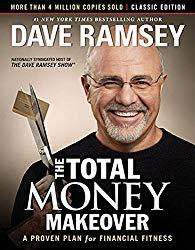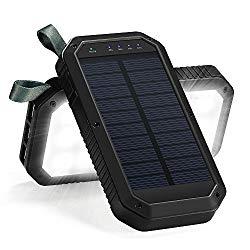For years, people have envisioned having a flying car so that they could just fly over the traffic and make it to work in ten minutes instead of sitting in traffic for hours. Virtually every movie from the fifties through the eighties about the future had flying cars in it, expecting them to be just around the corner. Yet where are they? Where are the flying cars?
The answer is that the flying cars are here. Actually, they have been here for more than a century. They are called, “planes,” and we really should be using them for trips of more than fifty miles or so regularly. Instead of driving, many people should go to a local airport within a few miles of their homes and jump on a plane taxi with a few other people, which should depart about every five minutes or whenever they have enough people, to fly into the city. Once there, the infrastructure to get them where they need to go in the city should all be ready, from taxis to shuttles to buses to moving sidewalks. The issue is that we have made planes so difficult to use. It is really difficult and expensive to get a pilot’s license that allows you to take commercial passengers. You also need to file a flight plan each time that you fly and be in constant contact with the towers that guide each plane instead of having highways in the sky where people follow the rules of the sky to avoid collisions just as they do in cars. Hopefully, GPS will change all that since it will enable automated collision avoidance and control – you could just take the plane up and then lock into a system that would take you to the destination, correctly separating planes and controlling traffic flow. Actually, the control system could probably take off and land for you with just a little human help.



Shop Personal Finance and Business Books
I’m not going to hold my breath for such a system, however. The issue is that air travel is tightly, tightly regulated. This means that it is really difficult to do anything innovative. If you were to come in with a plan for an air traffic system, you’d need to spend years and millions of dollars proving to a group of regulators that it would work and be safe. The automobile was lucky in that there was little regulation at the time they were first built. Planes came into being more slowly and were perceived as more dangerous, so regulation got a tight grip, resulting in the extra three hours it takes when you fly to get to the terminal, go through security, wait for the flight, and then get out of the airport on the other side. If cars were regulated the same way, we’d all be walking to bus stops and waiting just as long.
Since small planes is probably not going to be the answer, what can we do about the terrible traffic issues that we are seeing? The answer is not building more roads since roads take so long to complete they are full before they are even completed, plus they just make more of a mess while they are being constructed. The answer is also not trains or light rail. In order for trains to be cost-effective, you would need to fill the cars and have standing room only all day long. People only like riding trains because they are half-empty and the fares are highly subsidized, making up for the inconvenience of walking long distances in all sorts of weather while carrying things when you get where you’re going. Luckily, the answer is here: working remotely.
Many people do jobs they could do remotely. They work on computers and mainly talk to their coworkers through emails and texts. They work in call centers where they are on the phone. Now with video calling, people could do face-to-face meetings, share slides, and do other collaborations previously done in offices. IT support is also often done remotely today, thanks to programs like Remote Desktop. Really, companies could just have most people work from home, which is where many would prefer to be anyway so that they would not need to get dressed up, fight traffic, work in a small cube, buy lunch, then fight traffic to get home. If you fly into most metropolitan areas, you’ll see lots and lots of cheap land with no traffic within 20 to 30 miles of the city, so people could avoid all of the hassles and high costs of city life if they wished if they didn’t need to go into the city to work.





Shop for camping and hiking supplies
There are several issues on why this does not happen. Some people work on things that are proprietary or protected information and need to have computer systems that are constantly updated for security and controlled. Other people do things like work in factories or other jobs where they need to be on location. The main reason that employers don’t let people work from home, however, is that they don’t trust them to actually be working. There is some justification for this concern, for while many people will work diligently and do a good job, others will play since the boss isn’t around to check on them.
There is an easy answer, however, and that is local office centers. Entrepreneurs could start remote office centers with 10-100 offices/cubicles and rent them out on both short-term and long-term basis. These centers would have all of the needed IT infrastructure needed for remote work and have regular computer security updates. Companies could then rent spaces in these areas for however many employees live nearby. They would then know that their employees were in a location away from the distractions of home. If needed, they could have a manager for each cluster of employees.
Instead of driving 15 miles through traffic into the office, you’d drive a mile or two through light suburban traffic. Perhaps you’d walk or ride a bike in sometimes. You could run home for lunch, run to the kid’s school when needed, or run into the office briefly when needed when you were home. You could live where you wanted and yet still be able to work for whomever you wanted. For employees, it would be great because you would not need to relocate to change jobs, meaning that the whole country or world would be potential employers.
There would be no reason for everyone to be on the same highways at the same time twice per day. The ones who really do need to commute to specific sites in the city would find there commutes much easier as well. So, there it is, The SmallIvy Plan for reducing traffic. What are your thoughts?
Follow me on Twitter to get news about new articles and find out what I’m investing in. @SmallIvy_SI
Disclaimer: This blog is not meant to give financial planning or tax advice. It gives general information on investment strategy, picking stocks, and generally managing money to build wealth. It is not a solicitation to buy or sell stocks or any security. Financial planning advice should be sought from a certified financial planner, which the author is not. Tax advice should be sought from a CPA. All investments involve risk and the reader as urged to consider risks carefully and seek the advice of experts if needed before investing.

